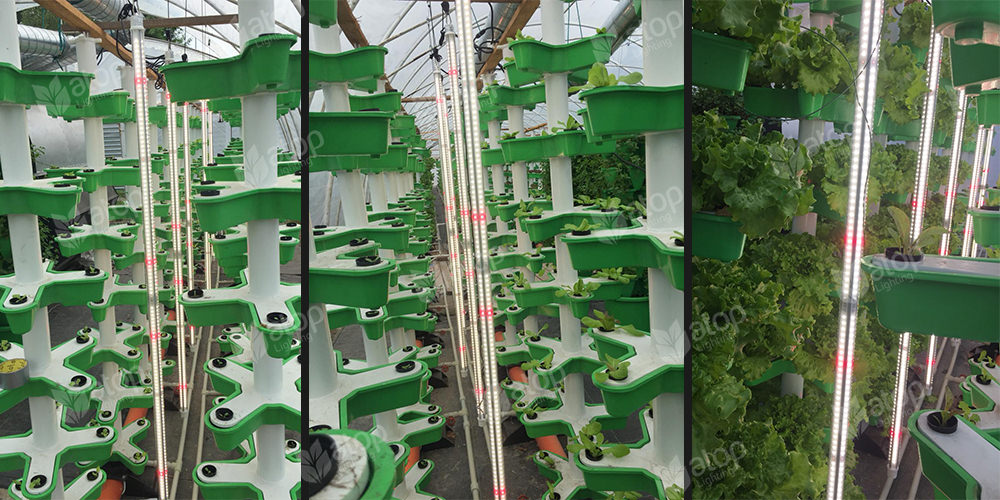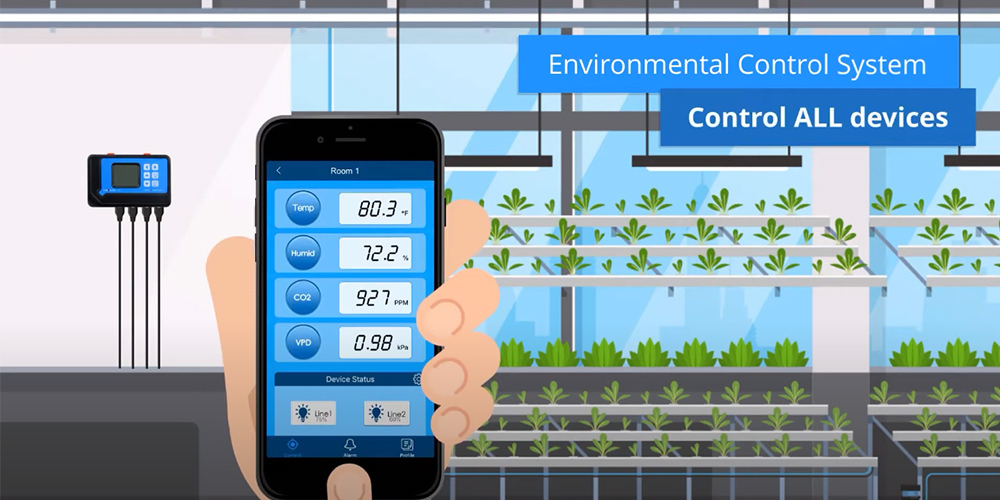What Are Lighting Requirements for Hydroponic Farms
Hydroponics is one of the most common growing methods in the world of modern agriculture. By cultivating plants without soil and utilizing water-based nutrient solutions, hydroponics offers numerous advantages, from maximizing space utilization to conserving water resources. However, successful hydroponic farms require carefully controlled lighting to provide the necessary energy for photosynthesis and plant growth. So, what are the lighting requirements for hydroponic farms? In this blog, we will discuss hydroponic lighting requirements.
Why lighting is important in hydroponic farms
Hydroponic systems are utilized in greenhouses and indoor farms, where artificial lighting is critical as supplemental lighting or the sole light source for plants. Lighting in hydroponic farms is not just about providing light; it’s about providing the right kind of light in the right amounts at the right times to maximize the efficiency and output of hydroponic farms.
Firstly, providing the right spectrum and intensity of light improves photosynthesis efficiency, leading to healthy growth and strong yields. Secondly, hydroponic lighting can control plant cycles. By adjusting the photoperiod, you can influence flowering times, and plant size, and even manipulate yields. Lastly, hydroponic lights enable higher space utilization. Hydroponic farming often involves growing plants in vertically stacked layers or hydroponic towers; artificial lights, especially LED grow lights, provide uniform coverage and promote healthy growth throughout the growing area.
Requirements of hydroponic lighting
When it comes to hydroponic systems, there are several key lighting requirements to ensure optimal plant growth and yield.
Efficient LED hydroponic lighting
In recent years, LED grow lights have become the common choice for hydroponic farms due to their high efficiency, long lifespan, and low heat generation. More importantly, LED lighting supports a tailored spectrum for your specific needs. The customized light spectrum can precisely meet your plants’ needs and improve their growth.
Light spectrum
Different wavelengths of light play a vital role in plant development. For instance, blue light promotes strong stems and lush foliage, while red light encourages vibrant blooms and fruit production. Supplemental light spectra, such as far-red and UV, can influence plant morphology and flowering. Full-spectrum LED grow lights are preferred for most plants as they mimic natural sunlight and promote photosynthesis. However, hydroponic lighting with a customized light spectrum is required to achieve specific goals, such as unique plant colors and enhanced taste.
Light intensity
Requirements for light intensity vary among plant species and growth stages. High-light plants such as cannabis and tomatoes require higher light intensity than lettuces. Vegetative and flowering stages require more light than seedlings.
It is critical to provide the right light intensity for your hydroponic system. Insufficient light will lead to stunted growth, while excessive light will cause stress to plants. Dimmable LED grow lights are perfect options for hydroponic farms as they can provide different light intensities at different plant stages.
Photoperiod
In nature, day and night cycles regulate plant growth. Photoperiod refers to the duration of light exposure plants receive each day. Long-day plants require longer photoperiods, typically over 12 hours, while short-day plants initiate flowering when the photoperiod falls below 12 hours.
Light distribution and coverage
Light distribution and coverage are often overlooked by growers, yet uniform light distribution is essential for even growth and to prevent shaded areas. Light distribution is not only related to the fixture itself but also to the position of the light. Well-designed LED grow lights utilize high-performance LEDs and optics, thereby avoiding shaded areas under the lights. Additionally, maintaining an appropriate distance between the light and the plants also contributes to uniform light distribution. For a vertical hydroponic tower, hanging the inter-canopy lights vertically helps provide light to the plants evenly from top to bottom.

Ingress protection
One of the unique features of hydroponics is that it grows plants using water-based nutrient solutions instead of soil. This environment requires lighting fixtures with high ingress protection to be waterproof. An IP rating higher than IP65 is recommended for hydroponic farms to ensure stable performance.
Considerations of setting up a hydroponic lighting system
A hydroponic lighting system involves more than just lighting fixtures. It is also related to your budget, grow rooms, installation, and environmental control. For an efficient and effective hydroponic lighting system, here are some considerations to keep in mind.
Budget and space constraints
The size of your grow area will dictate the number and types of lights you need. You can then select hydroponic lights based on your budget. Lighting fixtures should be positioned at the right height for proper light distribution and coverage. A lighting plan is helpful for maximizing efficiency with the minimum number of lights. The lighting plan is normally provided free of charge by manufacturers.
Safety and compliance
Well, safety comes first. Hydroponics involves water and electricity, which may cause disasters if not handled properly. Hydroponic lighting with high IP ratings, such as IP65 and IP66, is waterproof and protects internal electrical components, keeping them safe from water. Ensure all electrical components are properly grounded to prevent short circuits and fires.
Environmental control
Besides lighting, temperature, humidity, and other environmental factors are also essential for plant growth. Moreover, hydroponic lighting also generates heat that affects environmental control. Therefore, sensors, fans, air circulation systems, and other equipment should be installed in your hydroponic setup.
For flexible control, integrate your hydroponic lighting system with other environmental components. Some of our products can be integrated with the TrolMaster environmental control system. With this control system, you can not only control the lighting but also other environmental factors to provide optimal environments for plants.


